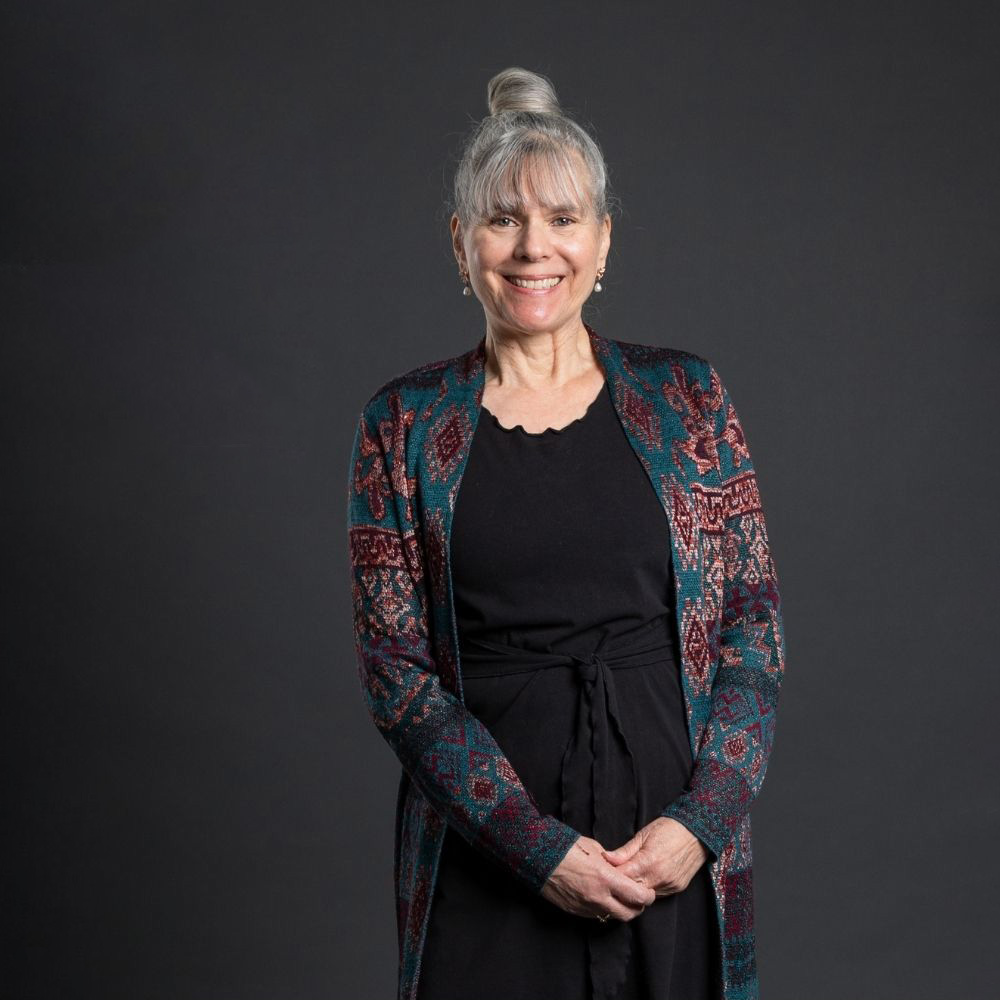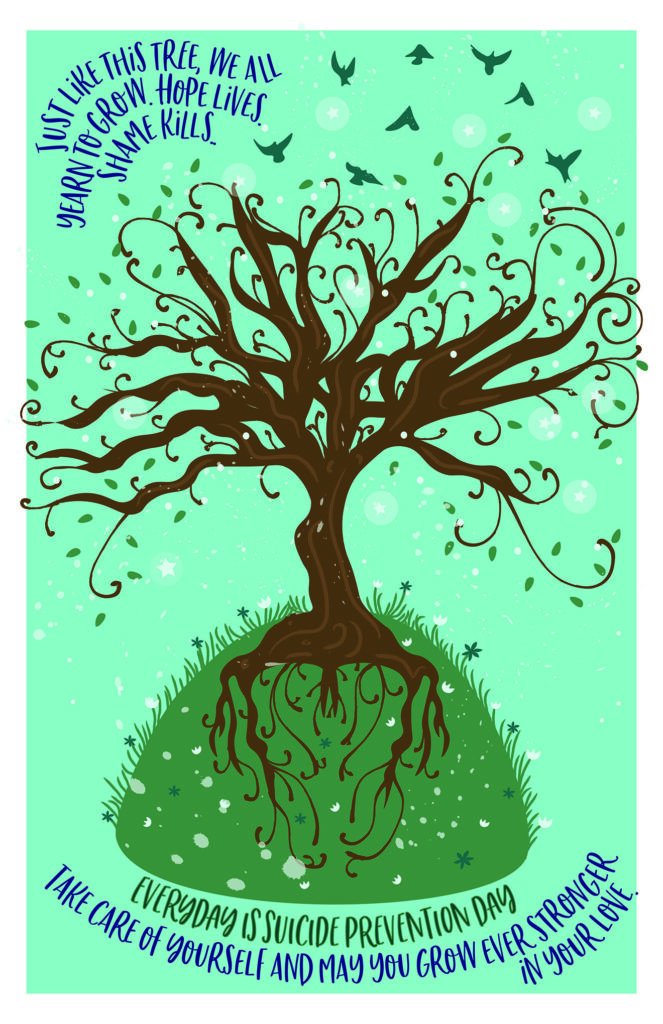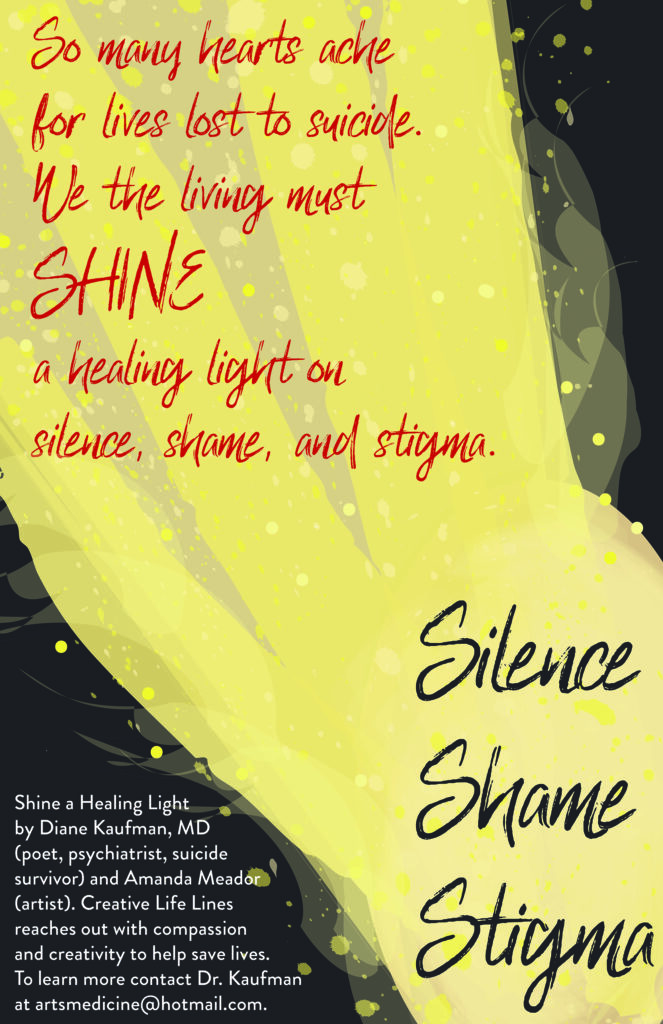
In the realm where creativity intertwines with a profound commitment to mental health, Dr. Diane Leslie Kaufman stands as a beacon of hope and inspiration. Founder and director of the Hold On Campaign for Suicide Prevention, Dr. Kaufman’s journey encompasses the realms of poetry, artistry, child psychiatry, and a resilient spirit that emerged from personal struggles. Her creative output includes internationally acclaimed songs such as “Hold On” and “Holding The Heart When It Breaks”. Notably, “Hold On” won the Best Song award at the Helsinki Independent Film Festival 2023. In this exclusive interview for Indie Cinema Magazine, Dr. Kaufman shares the deeply personal stories and creative processes that drive the Hold On Campaign, shedding light on the intersection of art and mental health in a transformative journey towards healing.
Indie Cinema Magazine: The Hold On Campaign is a unique initiative that combines art and suicide prevention. Can you share more about how you came up with the idea and what inspired you to use art as a medium for this cause?
Diane: Thank you for your question. Hold On Campaign brings together my decades of experience as a child psychiatrist, and experiences I’ve had during my life, as I had attempted suicide when I was a medical student and have also experienced suicide loss. From childhood on I would write poetry to express my feelings. My interest in psychiatry had to do with being drawn to people’s “stories.” I wanted to help in creating from the ashes of despair and trauma, new stories that were hope-filled and life-affirming. Upon learning in December 2022 of the suicide of Stephen Boss aka tWitch, I was inspired to write the poem, “Heartbreak Times Infinity” to empathically express the pain of suicide, and to encourage a person in such pain to “hold on” and not act on their suicidal thoughts. I could sense the poem’s musicality. I knew its message would be further enhanced by becoming a song, and that as a song, it would reach more people. “Heartbreak Times Infinity” transformed through creative collaboration with Shan Carballo, into the “Hold On” song, and that was the spark that launched the Hold On Campaign for Suicide Prevention. The Hold On Campaign uses the power of both art making and art experiencing to help nurture connection, expression, and healing. We are a welcoming community and provide arts & healing workshops and presentations on mental health and resilience. As part of our outreach, there are also songs, posters, art cards, and an animated short film.
Indie Cinema Magazine: Your artist statement mentions that creativity is the lifeblood that beats your heart. How does your background as a poet, artist, and child psychiatrist influence your approach to songwriting and the messages you convey in your music?
Diane: The poetry that comes through me is a transformative experience. I never know where it will lead me, but I do know that I want the poem to help me understand. That could be depths of feeling, the impact of experience on our body, mind, and spirit, and the need for change. Writing as a form of creativity transports me into another mindset – a way of both stepping into the experience and at the very same time stepping back in order to gain a wider perspective. Through the poem making to lyrics, I want my words to speak to the person who is in pain. It’s as if I am having a conversation with them and also with parts of myself during the creative process, and that becomes the foundation for the song.
Indie Cinema Magazine: As a suicide attempt survivor and loss survivor, your personal experiences have shaped the direction of your work. How do these experiences inform the themes in your songs and the overall mission of the Hold On Campaign?
Diane: The mission of the Hold On Campaign is to help save lives by using creative expression to “hold on” and not act on suicidal thoughts. There is a “life and death” moment when a person with suicidal thoughts either impulsively or by plan may act to end their life. If there could just be something safe to intervene during that actual moment, lives could be saved, as the intensity of suicidal thoughts are like waves that can pass if given time. I want my poems to co-creative songs to convey compassion and understanding of the suicidal person, such as their thinking they are a burden and their life is without meaning, but also to gently yet firmly challenge their distorted thoughts and overwhelming feelings, so as to offer hope, new life-affirming thoughts, and to encourage reaching out for help, and using the crisis and lifeline numbers.
Indie Cinema Magazine: The four internationally award-winning songs you’ve co-created, such as “Hold On” and “Don’t Give Up” are powerful contributions to suicide prevention. Can you walk us through the creative process behind one of these songs and how the collaboration with other artists unfolded?
Diane: I would like to tell you about the creative process for the most recent song, Holding The Heart When It Breaks, which has won international awards. On July 26, 2023, I attended an all-day suicide prevention conference in Portland, Oregon where I live. It was the debut of the Hold On Campaign as I had a display table at the conference. During the conference, I participated in a “Holding Space” break-out session and that was about “how to be” with someone who was having suicidal thoughts. When I went home later that day, I read of the death – must likely by suicide – of Sinead O’Connor and the suicide of her 17-year-old son Shane in January 2022. I read and watched her social media posts in which Sinead spoke of her ongoing despair over the death of her son. The very next morning I wrote the poem, “Holding The Heart When It Breaks.” In that poem I directly ask how one can go on in the face of the enormity of emotional pain and loss. I was asking myself those questions because of what I read about Sinead. By the end of the poem – and I have to say the poem seemed to have written itself – there was a reason to go on living, still feeling pain, but also – very importantly – still feeling the love. A few weeks prior to the conference, I had found at home, my copy of a children’s book on poet ee cumming’s poem, “I carry your heat with me” with illustrations of a mother and child by Mati McDonough. I believe the creative collective unconscious wove together all these experiences to form the poem. I immediately reached out on the freelance Upwork site to search for a singer-songwriter. I chose Annabel Hodges as I was impressed when she sent me an audio clip and told me she’d heard the melody as soon as she read the poem, and that this was very unusual for her. I have been fortunate in following my intuitive feeling of creative connections being “just right” and I was not disappointed. I gave Annabel my suggestion on how to musically convey a swell of emotion near the end of the song through the pacing of the words. I reached out to James Manno of JAMMAN Productions with whom I worked previously. James worked with Annabel’s vocal expression and added harmonies to the song. It was an amazing process to be within and behold! I cried so many times when I listened to the final song because of the authentic pain, sorrow, beauty, and love that it embodies. I have been with others – even strangers – who upon hearing the song have cried, and then shared their life experiences with me.
Indie Cinema Magazine: Your collaboration with Shan Carballo on the “Hold On” song seems to have a profound impact on both of you. Can you share more about the creative synergy between you and Shan, and how this collaboration has influenced your perspective on the healing power of music?
Diane: After writing the “Heartbreak Times Infinity” poem, I reached out on Upwork for a creative collaborator. That was in December 2022. Shan later shared with me how the song impacted him on a human level to not only help others but also how he came to realize the poem to song profoundly spoke to his own life experiences as he had also been depressed and suicidal in the past. So strong was the pull – the energy – of the “Heartbreak Times Infinity” poem, that he stopped everything to compose the song and to sing it as he played the guitar. It was as if all this took place instantaneously. We were united in that creative realm. Shan shared with me versions of the song and I gave him suggestions, especially adding a new line, “but how can love be known” to the lyrics. The music added so much to the poem turned into lyrics. The melody, the chosen notes, and the emotion of his singing all brought the meaning of the poem to life. I envisioned how a person in distress could listen to this song over and over again to help give them strength to “hold on” and by doing so, to live on. I definitely know music has healing powers and so want the Hold On Campaign’s songs to be used with intention for that purpose.
Indie Cinema Magazine: Bipolar II Disorder is a significant aspect of your journey. How does this personal aspect of your life influence the themes and emotions in your music, and do you find that it resonates with others who may be going through similar experiences?
Diane: Bipolar Disorder is clinical episodes of hypomania and depression. My hypomania which has at times verged into mania, but not lasting as long to meet the full criteria of mania, has me feeling energized, happy, talkative, not sleeping as much, highly creative, and I have a bubbling feeling as if I’m champagne with effervescent bubbles. As long as hypomania does not dip down into depression or go up into mania, it can be a positive experience. I believe it has at times aided me during my creative process, but I also know I have been creative without experiencing hypomania. During depressive episodes I have no urge for creativity unless you count being absorbed in negative imagination per thoughts and feelings. Knowing that writing can help me, I have purposefully turned to poetry to release my feelings. Writing the poem engages different parts of the brain as just in writing and clarifying how I am feeling – getting the words and rhythm and totality of the poem to my liking – can be satisfying and has helped me feel better. I have been on medication in the past and have also participated in therapy. I encourage anyone having mood symptoms to not hesitate at all in seeking out help because receiving an accurate diagnosis is essential to getting the help you need. There is no shame in needing help. We are all human and need help. Being able to reach out for help is a sign of strength not weakness. I believe the authenticity and power of my poems to co-creative songs must certainly be related to their emerging from the lived experience of my own mental health journey and my experiences as a child psychiatrist.

Indie Cinema Magazine: Creative Life Lines and the art cards/posters like “Just Like This Tree” and “Shine a Healing Light” add another dimension to your advocacy. How do these visual elements complement the music in conveying messages of hope and support for mental health?
Diane: The Hold On Campaign is about all forms of art being of potential help to us. Creative Life Lines which “reaches out with creativity and compassion to help save lives” and its art cards/posters are not only compelling visually, but the verbal content is uplifting. “Just Like This Tree” was created in my grieving the suicide of a friend who was a mental health colleague. A few weeks after her death in August 2019, I was walking on Lovejoy Street going to Starbucks, and I saw a tree with branches coming off its trunk. I thought to myself, “that tree really wants to live.” I wrote down the words, “Just like this tree, we all yearn to grow. Hope lives. Shame kills. Every day is suicide prevention day. Take care of yourself and may you grow ever stronger in your love.” I took a photo of the tree and sent that photo and my words to artist Amanda Meador who created the “Just Like This Tree” poster. I’ve had the poster enlarged to 7’ tall and brought it to NAMI Walks, the annual gathering of the National Alliance on Mental Illness. People are drawn to the “Just Like This Tree” beauty and message. The art cards have resource numbers on the back of the card. I have a whole series of Creative Life Line images which include those for mothers and children, fathers and children, bullying, help for the helpers, the military, and more. If anyone is interested in these images, please reach out to me at diane@holdoncampaign.org.

Indie Cinema Magazine: Your song “Hold On” was inspired by the passing of Stephen Boss. Can you delve into how this specific event impacted you and why it became a catalyst for creating the Hold On Campaign for Suicide Prevention?
Diane: Stephen Boss aka tWitch was a well-known celebrity, but I did not know about him. I learned of his suicide when I was reading the New York Times. He was just 40 years old when he died, and from all that I read, he was a warm, loving and charismatic man, who was a beloved husband, father, dancer, and so much more. I started imagining what could have led him to take his own life and how his death would impact in devastating ways his wife and children, and fans who adored him. There is an increased risk of suicide in those who have lost loved ones to suicide. I wrote the poem, “Heartbreak Times” Infinity,” as that is how it felt to me. The poem spoke about how important it is to be able to “hold on” and not act on suicidal thoughts as thoughts and feeling “come and go.” The poem ends begging the person to not kill themselves and to get help so they can live. Shan Carballo beautifully transformed my poem into song and sings the song as he plays the guitar. The animator Lucia Martinez Rojas created the lyric music video. “Hold On” has won so many international awards culminating in Best Song at your Helsinki Independent Film Festival. This is a great honor. The music video has the United States’ 988 crisis and lifeline number. The video could be updated with different countries’ crisis numbers. This is a song meant to save lives. The power of this song inspired me to create the Hold On Campaign for Suicide Prevention.
Indie Cinema Magazine: Shan Carballo’s description of the songwriting process for “Hold On” is touching. How did it feel to have someone resonate so deeply with your project, and how do you believe the collaborative nature of the song contributed to its effectiveness in reaching those in need? What was it like working with Shan?
Diane: It was wonderful working with Shan. There was no ego involved. We were just two human beings coming together from far away (Shan lives in Bali, Indonesia and I am in Portland, Oregon, USA), but so close in our spirits to create a song that could reach out and comfort an aching heart and suicidal mind. We were speaking the same language even though we had different creative talents. I was very moved when Shan later told me how much the song meant to him as it offered healing for himself as well as for others. I believe Shan’s life experiences must have played – even though he may not have been consciously aware of this – a significant part in how he wrote the song and sang it. There was also a mysterious quality to our working together. How was it that of all the people in the world we had come together? We both trusted that it was “meant to be” and from what emerged, it truly was. I believe creativity is a powerful force for good in the world and can accomplish the amazing when we align ourselves with that energy.
Indie Cinema Magazine: Looking forward, what are your aspirations and goals for the Hold On Campaign, and how do you envision the intersection of art and mental health evolving in the future through initiatives like yours?
Diane: My dream to be made real for the Hold On Campaign for Suicide Prevention is for it to become widely known for its life-saving songs/music videos shared across the world, for organizations to request the Creativity & Suicide Prevention presentations that are offered, and that people participate either in-person or online in our Arts & Healing workshops. Most of all, I want those who are struggling with suicidal thoughts to know they are not alone, and that if they just “hold on” by not acting on their suicidal thoughts and reach out for help, their life can be saved. As the Hold On song implores, “Tomorrow does not have to be the same as yesterday.” I also very much want the world to know that the arts can play a powerful role in promoting hope and healing.
Indie Cinema Magazine: Any last words?
Diane: I enjoy collaborating with kindred spirits on behalf of suicide prevention and welcome your readers reaching out to me at diane@holdoncampaign.org. Thank you for this wonderful interview.
